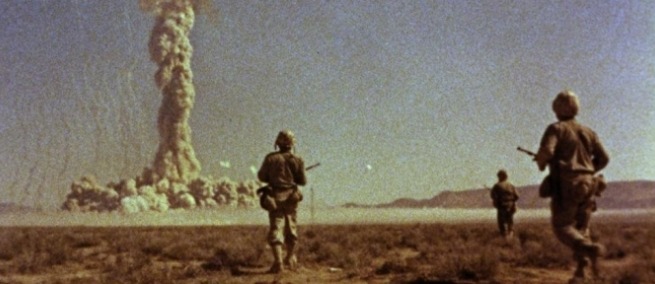
Thirty-six years after Jayne Loader and Kevin and Pierce Rafferty’s documentary THE ATOMIC CAFE revealed America’s post-war attitude towards the atomic bomb, SXSW premiered a 4K digital restoration of the film. Juxtaposing government films of atomic tests, testimonials from soldiers, cautionary cartoons for school kids, and bomb shelter advertisements targeted at housewives, the documentary is funny, terrifying, and altogether circumspect about truths. Science & Film spoke with writer, director, and producer Jayne Loader by phone before the film's March 10 SXSW premiere. Kino Lorber will be releasing the restoration into theaters in summer 2018.
Science & Film: What was the most surprising thing you learned while researching this movie?
Jayne Loader: The most surprising thing that we learned is in the beginning of the film. Paul Tibbets [the Air Force pilot who flew the plane that dropped one of the atomic bombs on Hiroshima] talks about how the government wanted to conduct bomb blast studies at Hiroshima. He explains how they picked, deliberately, a Japanese city that was a virgin target. So, they didn’t bomb Tokyo because Tokyo had already been bombed. That was a level of cynicism that seemed really extreme to us at the time. That was pretty shocking. And, of course, learning about the atomic soldiers who were in the blast area and were made to charge into the mushroom cloud. That was fairly shocking.
Also, what happened to the people who were downwind of the atomic bombs down in Utah, Arizona, and around the Nevada test site? I lived in Fort Worth, Texas, and I have probably six friends who died of brain cancers in their 20s and 30s. There is a book that has all of the maps of the paths of different atomic tests, and several of them went right over my town. I often thought about how I was protected because I wasn’t outside playing, I was in the library reading books. What I’ve often wondered is if those tests had anything to do with the friends I lost from cancer at an early age.
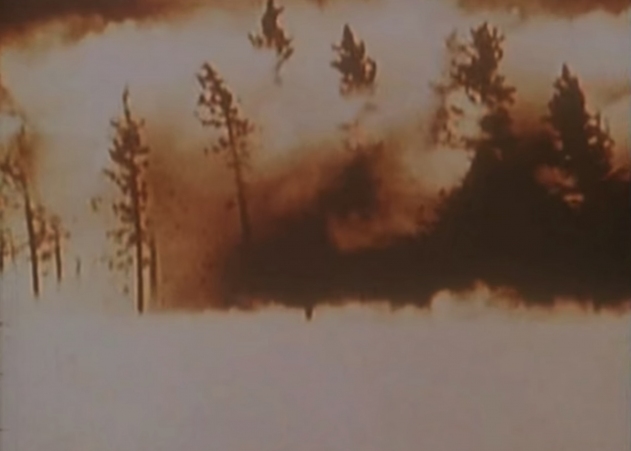
S&F: It is incredible that you were able to get some of the footage that you ultimately included in the film. Did you encounter resistance from any individuals or archives?
JL: We were trying to keep a very low profile while going to archives. We all moved to Washington to make the movie. We spent a lot of time at the National Archives, at the Library of Congress. Then, we started branching out to other departments of the government like FEMA, which is the successor organization to the old Office of Civil Defense. We never ever got any resistance from anyone. In fact, when we went to FEMA, this very nice man told us that there was a closet full of films. When we went back to the closet and I asked if he had a projector to look at the films with. He said no, but why don’t you just take them? So, we pulled our Volkswagen van up and we just filled it full of films. That was kind of the reception we got everywhere; everyone was very nice to us. They had no idea that anything in the films could ever be bad for their agencies.
The most exciting moment was when Pierce [Rafferty] and I went out to Tobyhanna, Pennsylvania where the Air Force depository of films was. We were sitting there hand-cranking reels of film on these old Movieolas, and suddenly saw these films about the atomic soldiers charging into the atomic bomb clouds. There were government people sitting in the same room with us while we were hand-cranking the films who were not reacting. We said, oh, yeah, this is an interesting reel, can we get this reproduced? They said, okay, no problem. Haha.
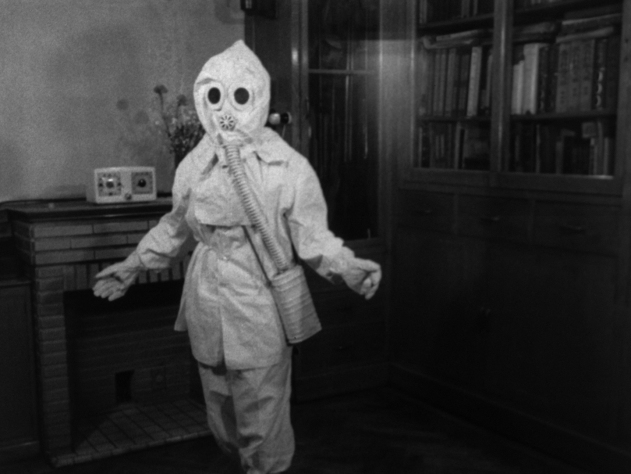
S&F: I’m sure anyone trying to see that footage now would have a very different experience.
JL: It was a very, very different time. We never ran into any opposition; we never had to file a Freedom of Information Act request. We never had to do any of the things that people have to do nowadays when they’re trying to get films out of the government. That changed pretty dramatically in the years after our film was released. I’m not saying because our film was released, but the Army and Navy moved all of their films to a repository at the Bakersfield Air Force Base in the middle of the desert. Suddenly, it became very hard to get anything out of them. That’s the way it is today. You have to really work hard for every foot of film that you get now. It was a much more innocent time for all of us back in the ’70s and ’80s.
S&F: Often organizations are trying to protect their reputation by limiting access to archives.
JL: I think in the days that we were making our movie, the government didn’t think that they had done anything wrong. Some of the government bureaucrats who we spoke with were quite proud of the work that they had done. They didn’t really see it as propaganda–they saw it as educational. So, it really took a new generation of people to look at that work and put it in a different light.
S&F: But so much of the science that is said in those films is preposterous. It feels especially so when THE ATOMIC CAFE juxtaposes the government films with cuts of experts speaking.
JL: Right. We only had two scientists in the entire film who we felt we needed to give some factual context to all the things that the government was saying at that time. We thought quite a bit in the editing process about whether or not it was correct to have some people who were telling the truth in the movie. Aside from that, the film is all basically false truths so the scientists did jump out at people as one little grain of truth.
S&F: It definitely puts the rest of it in stark contrast.
JL: That’s good.
S&F: What are your thoughts about showing your film to audiences today?
JL: I’ve been showing this film in colleges and universities pretty much since it was made. I just had a screening at the San Francisco Public Library. I think that the difference is that people today are slightly more willing to give the government the benefit of the doubt. I remember not long ago, at a screening, a young man came up to me and said: I can see that there were faults in the movie, but do you really think the government deliberately lied? And I said, yes I do. Because I think that they had the information from Hiroshima available, they had the facts and they didn’t communicate the facts to the American people. I’m very curious to see how people will respond to the movie next week when we show it at SXSW. I’m really interested to see how a contemporary audience will respond and what they will think given the kind of rhetoric that’s been going around about “my big red button” is bigger than “your big red button,” etc.
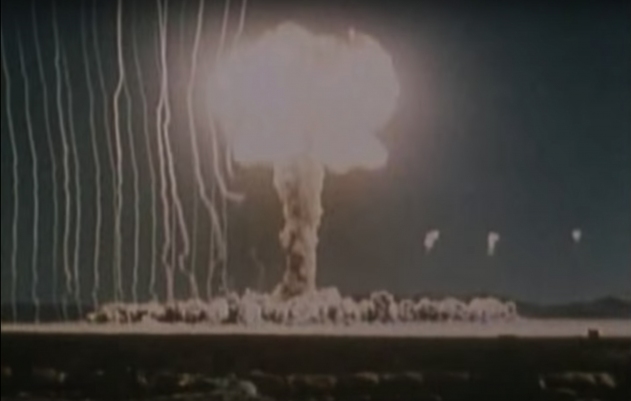
S&F: It’s definitely very timely.
JL: it seems more timely now than I would like, as a citizen of the world. I wish it wasn’t as timely as it is.
S&F: Has your experience showing THE ATOMIC CAFE recently been that people understand nuclear weapons or the atom bomb?
JL: I’m still not sure about that. My husband is an astrophysicist so everyone is very scientifically minded around here, but I’m not sure if everybody in the world has the same knowledge. It was interesting to see what happened when they had that false alarm in Hawaii. I think that was a good example of what people really know. Did people think that they could find a shelter that would be appropriate, that would protect them from a nuclear bomb? I wasn’t there so I don’t know. I heard that people called their loved ones to say they were going to die, and people who hadn’t had a drink in 20 years went into a bar and a bar for a double Scotch. I don’t think people have all the facts. If there was a tornado or a hurricane blowing through your windows, it would protect you if you ducked and covered. But doing so just wouldn’t protect you if there was a 20-megaton hydrogen bomb. You want people to know how to protect themselves to the degree that they can, but you don’t want them to think, if I do this then I will be protected, so we don’t have to worry about having nuclear war.
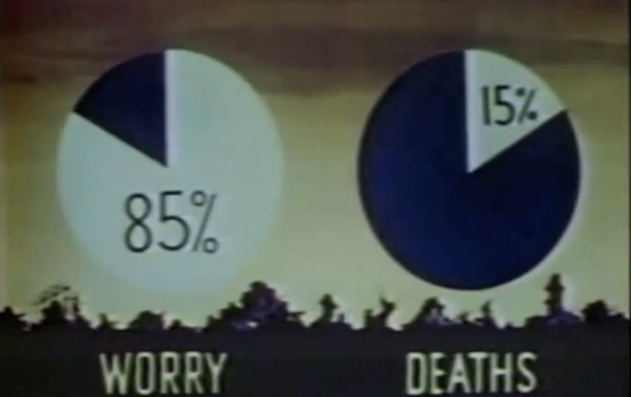
S&F: One part that I found particularly fascinating in your documentary was all of the footage about bomb shelters. I can imagine a lot of money was spent on those.
JL: I was talking to somebody last night who said when he and his wife bought a house here in Portola Valley that had a bomb shelter in the basement. What does everybody do with their bomb shelters when they find them in Portola Valley? They turn them into wine cellars!
I grew up across the street from a construction guy who built bomb shelters. He had all these sample bomb shelters in his backyard and his children who were my age at the time would have parties back there. I kind of grew up thinking a bomb shelter was a good place to have a party. Sort of like how in the movie, the bomb shelter was a good place for women to get away from the kids. Was it a waste of money? Yes, probably it was a huge, enormous waste of money, and all the supplies have moldered and been eaten by rats.
S&F: It was terrifying to hear in your movie an advertisement encouraging people to buy guns to protect their bomb shelters. We’re in the midst of that national conversation right now. I can imagine people using that as another reason for why civilians need to have guns.
JL: To protect ourselves during nuclear war, right? Exactly. Or the zombie apocalypse, which people probably think about more than they think about nuclear war, still.
THE ATOMIC CAFE premiered a new 4K digital restoration at SXSW. First premiered in 1982, the film is directed and produced by Jayne Loader, and Kevin and Pierce Rafferty. It was edited by Loader and Kevin Rafferty. THE ATOMIC CAFE is part of the National Film Registry at the Library of Congress.
The restoration was supervised by the filmmakers, and will open in theaters nationwide in summer of 2018, followed by an online release in fall 2018. Jayne Loader also produced Public Shelter, a 1995 project compiling archival video, photographs, audio recording, and text files about atomic weapons onto a CD.
TOPICS